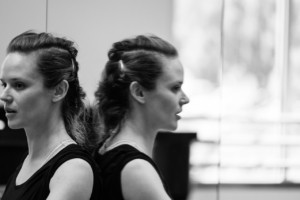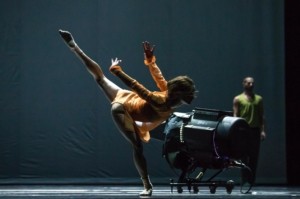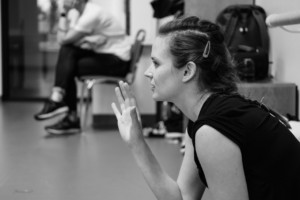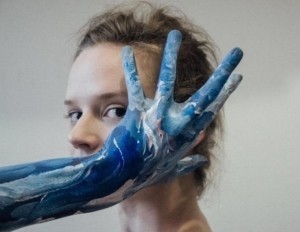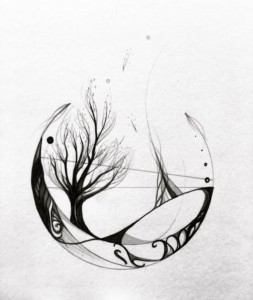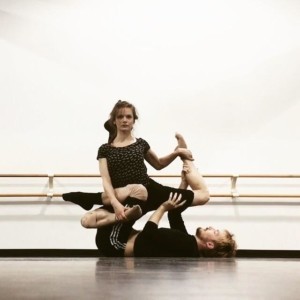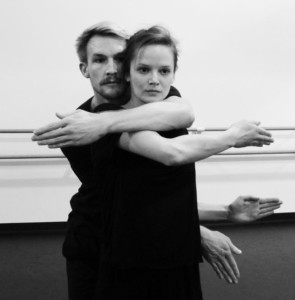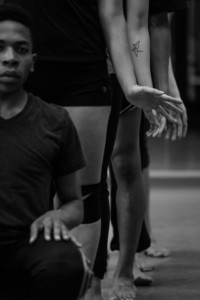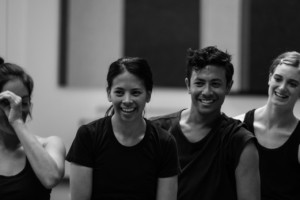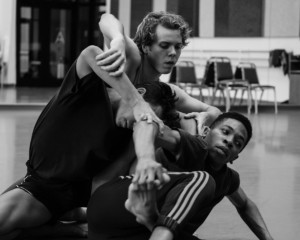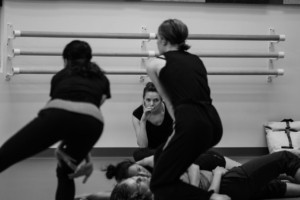“Densely dimensional, unpredictable, strangely graceful and wild, Alice Klock’s dances are like elegant ribbons caught in hopelessly tangled knots,” wrote Dance Magazine, in this year’s ‘25 to watch‘ feature.
One of the three choreographers chosen by Whim W’Him‘s dancers for the Choreographic Shindig IV that will open next Friday at Seattle’s Erickson Theatre on Capitol Hill, Alice Klock ‘spoke’ with me recently via email in a couple of written Q&A sessions (I’m out of town until next Tuesday). Here is our conversation:
How/when did you first start to dance? decide it would be your profession?
[Alice trained at Interlochen Arts Academy from 2003–07, and at the Alonzo King LINES Ballet and Dominican University of California’s joint BFA program from 2007–09. She also studied dance at Boston Ballet School, Canada’s National Ballet School, Miami City Ballet School, San Francisco Ballet School, the San Francisco Conservatory of Dance and Springboard Danse Montréal. In September 2009, she joined Hubbard Street Dance Chicago‘s second company, then was promoted to the main company in September 2011 and named Hubbard Street’s Choreographic Fellow in the fall of 2017.]
Both my visual art and dance hold equal weight and importance in my life. I feel that though there is crossover they also exercise very different aspects of my creative self. Visual art is meditative, intuitive, therapeutic. Dance is more about manifesting, and choreography is like world building. I often notice that as I am constructing a dance I’ll apply my painter’s eye to help problem solve, but otherwise the creation processes differ vastly. I love this. Feels gloriously balanced.
I grew up around visual artists and it is truly my father and grandfather that gave me my art education. The rest has been self teaching and blatant disregard for technique. There is something highly spiritual about my process with visual art. The creation of it feels very meditative and I am often surprised by what unfolds.
It almost feels like channeling some otherworldly aspect of myself. I have shown work at numerous Chicago galleries and enjoy a steady stream of commissions, including lately a lot of tattoo designs which is an exciting and somewhat unexpected evolution of what I do.
Interesting that you noticed the lack of my own dancing in how I present myself on my website. I suppose this is because I am at a point in my career where I am not trying to sell that part of myself anymore. I feel very content in that department, after nine beautiful years as a dancer at Hubbard Street Dance Chicago I have recently retired. I shall continue to perform as part of “Flock” a co-creative, co-choreography project I have started with my partner in crime Florian Lochner. Yes, after many years of holding up “dancer” as my identity I am shifting to fully explore more facets of myself. I suppose my website reflects this:
What is it about choreography that calls to you? What parts of the process appeal to you most?
As I mentioned, choreography is like world building. I feel that with the creation of a piece one can time travel, shape shift, solve the unsolvable, save that which can’t be saved, live dreams, be anything…basically I think dance making is magical. My work isn’t about execution or perfection. It’s about an experience of something beyond what we can perceive in our everyday. The process of creating this kind of work is thrilling to me, as it requires a particular kind of strategizing and problem solving.
What are the ideas/themes/questions about movement that you think about in the course of making a piece, overall and/or for particular works?
Can you tell me about your experience working with Whim W’Him up to this point? What would you like to share with blog readers about the piece so far?
Could you say a bit more about the specific “story or intellectual concept” that sparked your idea(s) for Before After? Was it an idea that you thought of ahead of meeting the dancers in the studio or an approach you planned to take with the dancers or …?
My thought process with “Before After” began with the word “chaos” and how in Greek mythology it represents the idea of the void before creation. What does this void feel like? Is this a space between the death of one world and the birth of another? This led me to “chaoskampf”, the struggle against chaos, perhaps the battle at the end of one world that initiates the next. From this I began to look at the human impulse to explain creation and our innate need to understand that which we cannot explain which leads us to our own human act of creation, the construction of myths. This was the conceptual groundwork for my piece before entering the studios. On my first day with Whim W’Him I asked each dancer what feels mythological to them, what in their lives feels like it contains that mystery and magic. From their answers we created the movement material, and each dancer plays that element they named within the piece. Beautifully, one of the dancers said that the aspect of life that felt most mythological to him is Death. Therefore, the piece starts with death, ushering us into the void and then into the creation of a new world.
Klockonian is a superhero alter-ego I created for myself when I was young. She is a keeper of great knowledge (like the Smithsonian). Somehow the name accidentally became my brand, which I enjoy as it allows me to be somewhat anonymous. I find this particularly interesting in the visual art world. People respond differently to my paintings or designs when they know I am a young woman. Sometimes I like to keep myself out of the picture and let my work speak for itself.
Photo Credits: 1st, 2nd, 5th and last 5 images by Stefano Francesco Altamura

